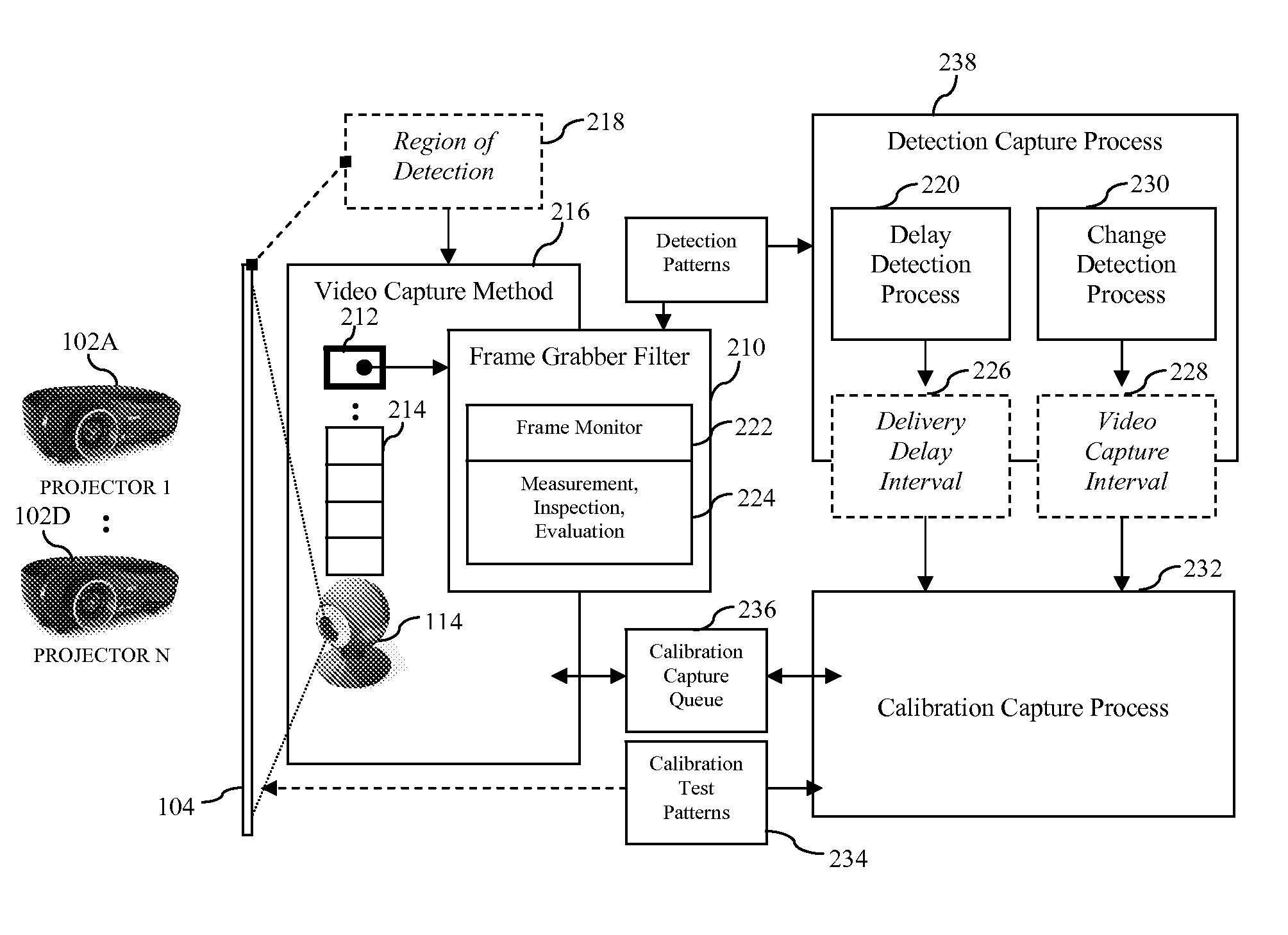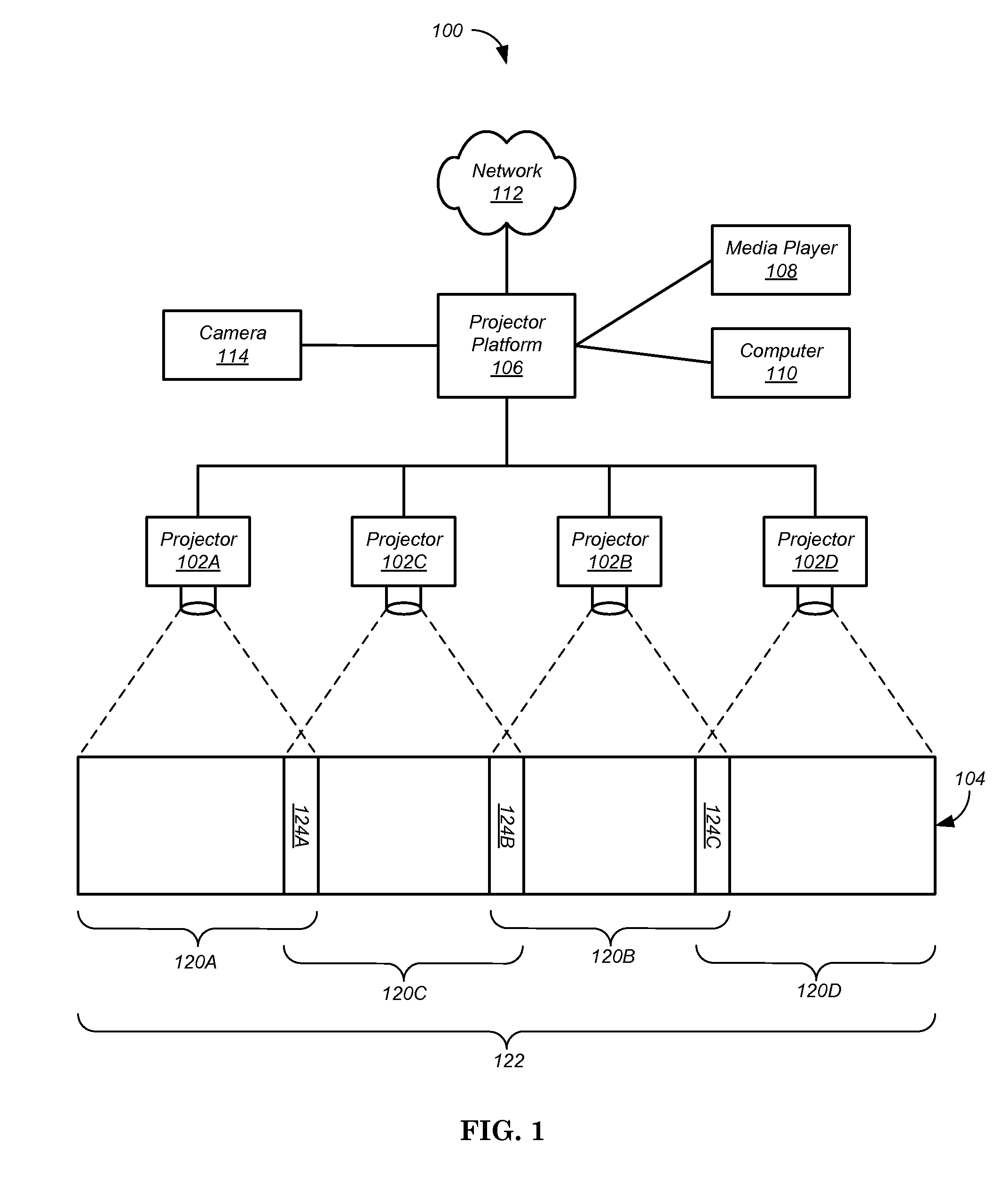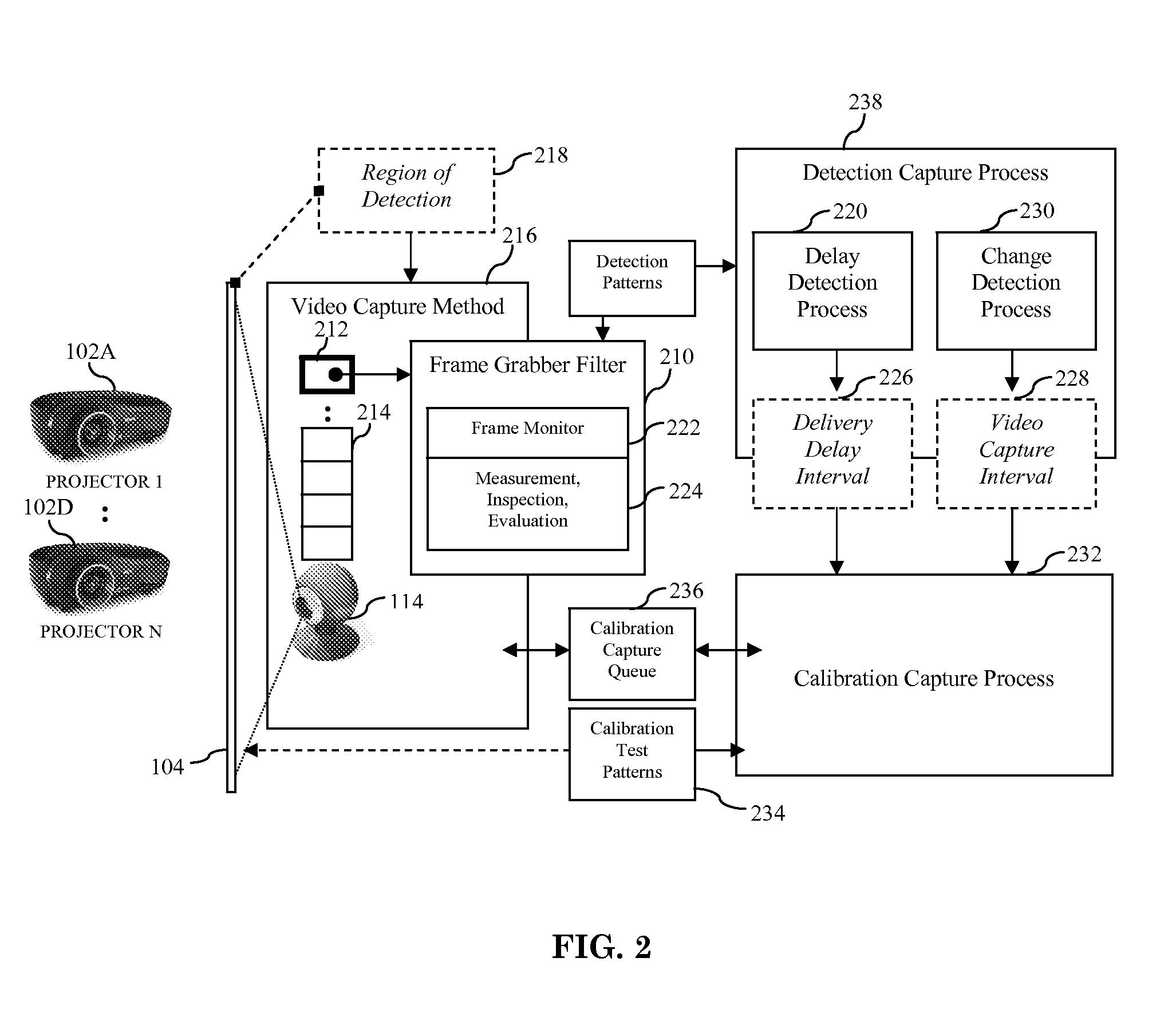Method For Determining A Video Capture Interval For A Calibration Process In A Multi-Projector Display System
a multi-projector display and calibration process technology, applied in the field of multi-projector display systems, can solve the problems of large-scale display that is no longer constrained by commodity projectors, cannot achieve very high resolution, project over vast areas, or create bright projections on very bright surface areas
- Summary
- Abstract
- Description
- Claims
- Application Information
AI Technical Summary
Problems solved by technology
Method used
Image
Examples
Embodiment Construction
[0028]The present invention relates to camera-based registration of projector display systems. During registration, one or more projectors project calibration images upon a display surface. A camera captures one or more images of each projected calibration image. A projector platform creates a mapping, for each projector, between pixel locations of the camera and pixel locations of the projector. After registration, the mappings are used to alter the images prior to projection so that seamless composite image can be displayed by the multiple projectors.
[0029]These mappings are stored in Virtual Pixel Map (VPM) files that form an accurate pixel registration map of each projector. Using the VPM files, each physical device pixel on a projector can be mapped to one or more logical pixels in a virtual region defining the large format display (composite image). This virtual large format display resolution defines the unit of each VPM pixel, which is a virtual pixel in the logical display ...
PUM
 Login to View More
Login to View More Abstract
Description
Claims
Application Information
 Login to View More
Login to View More - R&D
- Intellectual Property
- Life Sciences
- Materials
- Tech Scout
- Unparalleled Data Quality
- Higher Quality Content
- 60% Fewer Hallucinations
Browse by: Latest US Patents, China's latest patents, Technical Efficacy Thesaurus, Application Domain, Technology Topic, Popular Technical Reports.
© 2025 PatSnap. All rights reserved.Legal|Privacy policy|Modern Slavery Act Transparency Statement|Sitemap|About US| Contact US: help@patsnap.com



